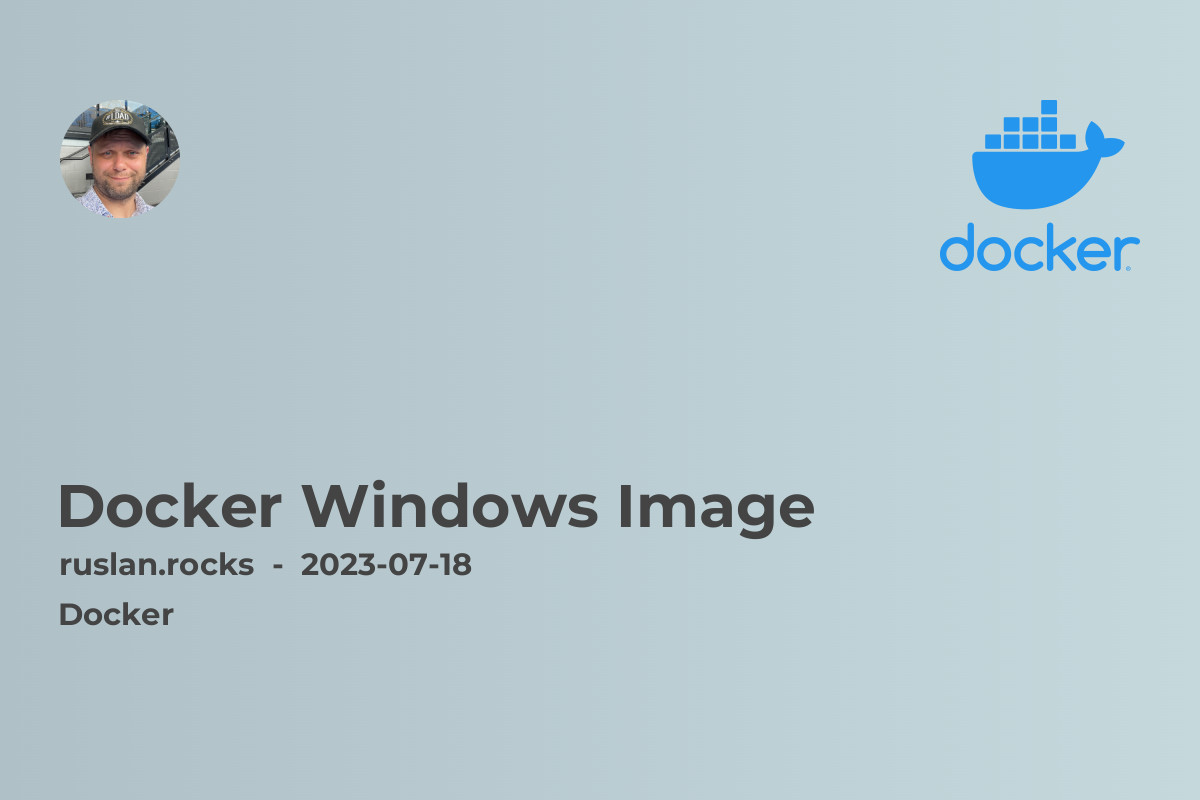- What is a Docker Windows Image?
- Why Use Docker Windows Image?
- Getting Started with Docker Windows Image
- Advanced Features and Use Cases
- Related Articles

Docker is a popular containerization platform that allows you to package and distribute applications along with their dependencies. While Docker is widely used on Linux systems, it has gained significant popularity on Windows as well. In this article, we will explore the Docker Windows image and how it simplifies container deployment on Windows.
What is a Docker Windows Image?
A Docker image is a standalone and executable software package that includes everything needed to run a piece of software, including the code, runtime, libraries, and system tools. A Docker Windows image is specifically designed to run containers on Windows systems. It provides a consistent and isolated environment for applications, eliminating the need for complicated setup and configuration.
Why Use Docker Windows Image?
The Docker Windows image offers several benefits that make it an attractive choice for containerized application deployment on Windows:
-
Portability: Docker Windows images are platform-independent, meaning that you can develop and package your application on one Windows machine and run it on any other Windows machine with Docker installed. This portability ensures that your application runs consistently across different environments.
-
Isolation: Docker Windows containers are isolated from each other and the host system, providing a secure and controlled environment for running applications. Each container has its own filesystem, networking, and process space, ensuring that changes made within a container do not affect the host system or other containers.
-
Efficiency: Docker Windows images are lightweight and share the underlying host system resources, such as CPU, memory, and disk space. This shared infrastructure results in efficient resource utilization and enables you to run multiple containers simultaneously without the need for extensive hardware resources.
-
Scalability: Docker Windows images make it easy to scale applications horizontally by running multiple instances of containers. Docker provides built-in orchestration tools, such as Docker Swarm and Kubernetes, that allow you to manage and scale your containerized applications seamlessly.
Getting Started with Docker Windows Image
To get started with Docker on Windows, follow these steps:
-
Install Docker: Download and install Docker Desktop for Windows from the official Docker website. Docker Desktop includes Docker Engine, Docker CLI, and other necessary components.
-
Enable Windows Containers: Right-click on the Docker Desktop system tray icon and select "Switch to Windows containers." This will ensure that you are running Windows containers instead of Linux containers.
-
Pull a Docker Windows Image: Open the Docker CLI or Docker Desktop UI and execute the following command to pull a Docker Windows image:
docker pull <image_name>
Replace <image_name> with the name of the Docker Windows image you want to use. You can find a list of available Docker Windows images on the Docker Hub (https://hub.docker.com/).
- Run a Docker Container: Once you have pulled a Docker Windows image, you can run a container using the following command:
docker run -it <image_name>
This command will start a new container based on the specified Docker Windows image and provide an interactive terminal session.
Advanced Features and Use Cases
The Docker Windows image offers several advanced features and capabilities that enhance the containerization experience on Windows:
-
Windows Server Containers: Docker Windows images can be used with Windows Server Containers, which provide a lightweight and isolated environment for running applications on Windows Server. Windows Server Containers are ideal for hosting microservices, legacy applications, and .NET applications.
-
Windows Container Networking: Docker Windows containers can be connected to different networking modes, including NAT, transparent, and overlay networking. These networking modes enable seamless communication between containers and the external network, making it easier to build complex and interconnected applications.
-
Persistent Data Storage: Docker Windows containers can utilize persistent data storage by leveraging volume mounts or Docker's data management features. By mapping a host directory or a network share to a container, you can store data outside the container and ensure its availability even if the container is stopped or restarted.
Related Articles
To further explore Docker and related topics, check out the following articles:
-
What Is Docker Daemon: Learn about the Docker daemon, which is responsible for managing and monitoring Docker containers on your system.
-
What Is Docker Desktop: Discover Docker Desktop, a powerful tool that simplifies the deployment and management of Docker containers on your local machine.
-
What Is Docker Hub: Explore Docker Hub, a hosted repository of Docker images that allows you to discover, share, and collaborate on container images.
-
Docker vs Virtual Machine: Which is the Better Choice?: Understand the differences between Docker containers and virtual machines and choose the right technology for your application deployment needs.
-
Managing Secrets In Docker: Keep Your Data Secure: Learn best practices for managing sensitive information, such as passwords and API keys, in Docker containers to ensure the security of your applications.
In conclusion, the Docker Windows image provides a powerful and efficient way to deploy and manage containerized applications on Windows. By leveraging the features and capabilities of Docker, developers and system administrators can enhance portability, scalability, and security while simplifying the overall application deployment process.
Remember, the key to getting started with Docker on Windows is to install Docker Desktop, pull a Docker Windows image, and experiment with running containers. So why wait? Dive into the world of Docker and experience the benefits of containerization on Windows!
